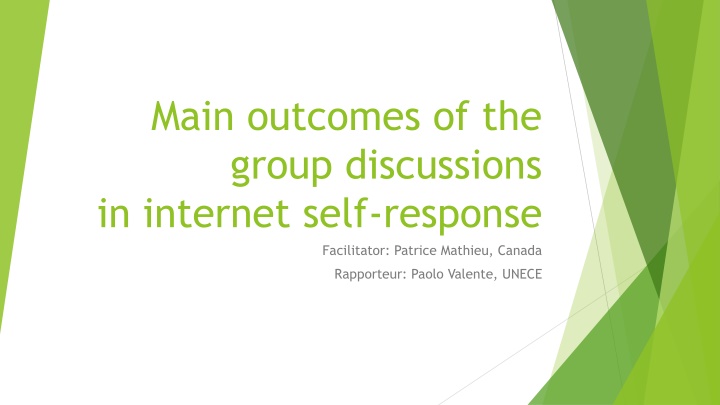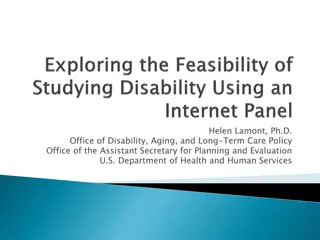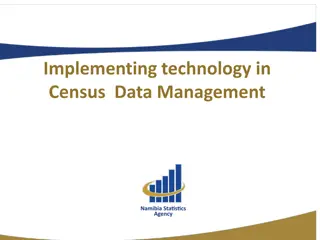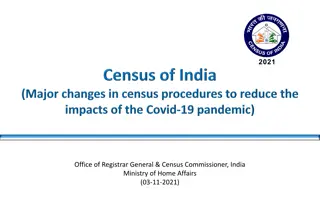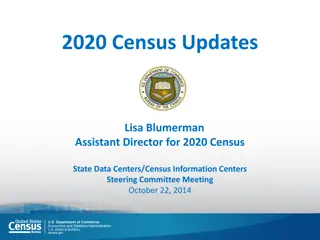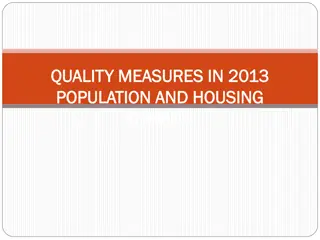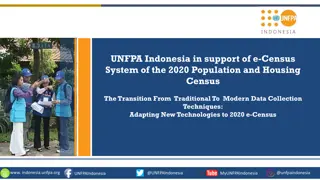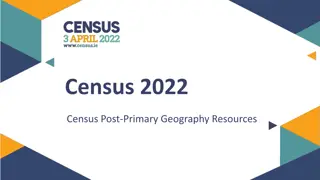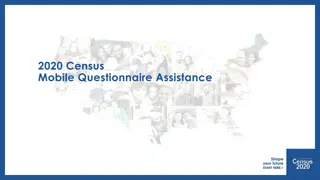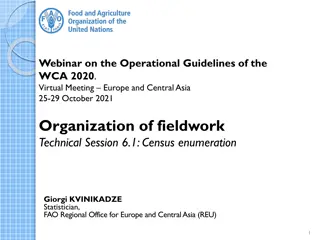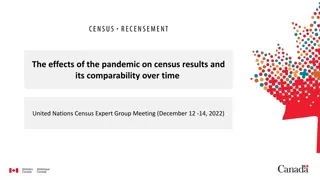Key Considerations for Implementing Internet Self-Response in Census Surveys
Essential factors for adopting internet self-response in census surveys include literacy/education levels, access to internet devices, public trust in NSI, step-by-step implementation strategy, and ensuring data quality through various measures. By meeting specific conditions and addressing concerns such as confidentiality, countries can modernize their census process and improve data collection efficiency.
Download Presentation

Please find below an Image/Link to download the presentation.
The content on the website is provided AS IS for your information and personal use only. It may not be sold, licensed, or shared on other websites without obtaining consent from the author.If you encounter any issues during the download, it is possible that the publisher has removed the file from their server.
You are allowed to download the files provided on this website for personal or commercial use, subject to the condition that they are used lawfully. All files are the property of their respective owners.
The content on the website is provided AS IS for your information and personal use only. It may not be sold, licensed, or shared on other websites without obtaining consent from the author.
E N D
Presentation Transcript
Main outcomes of the group discussions in internet self-response Facilitator: Patrice Mathieu, Canada Rapporteur: Paolo Valente, UNECE
Minimal conditions for considering possible adoption of internet self-response Literacy/education: the proportion of population that is illitterate or has very low education should not be large A significant proportion of the population should have access to internet using a PC (desktop or laptop) or tablet Smartphone is not practical to fill census questionnaire Special facilities with PCs and internet could be set up in schools, libraries to facilitate internet response and provide support (useful also for the elderly, disabled) Internet response could be adopted only in large cities If conditions are met, then TEST and verify acceptability
Public trust towards NSI and data confidentiality concerns General trust of the population towards the NSI is necessary to implement internet self-response If there is high sensitivity with regard to data confidentiality, then acceptability of internet response should be tested In most countries (but not all ) respondents prefer filling personal information via internet than on paper Adopting internet self-response may contribute to give a positive, modern and efficient image of NSI
Step-by-step strategy It is recommended to adopt a step-by-step strategy: 1. Use electronic questionnaires on laptops in small tests or small surveys 2. Move to internet self-response in test with larger samples, testing alternative strategies 3. Use in census with conservative approach 4. Use in census with aggressive approach
Data quality In general, data quality for internet response is BETTER compared to paper questionnaires, thanks to: Automatic sequencing of questions Drop down menus Interactive editing Important to provide good contextual help function, particularly for difficult census questions Provide support via toll-free telephone helpline, and social media (e.g. Facebook) In testing phase consult respondents (cognitive testing)
Availability of address/building/dwelling registers If registers are available, use data to mail out login and password for internet response, printed on letter and/or paper questionnaire If coverage/quality of registers is not good, use them anyway and complement with letters/questionnaires delivered by enumerators If registers do not exist, enumerators can deliver letters and/or questionnaires with login and password for internet response Internet response can be used as main method in part of the country, and paper questionnaires elsewhere
Multi-mode data collection and impact on census costs Adopting multi-mode data collection implies additional costs Initial investment for internet self-response requires significant financial resources and expertise Net cost savings should not be expected at least for first census, if step-by-step approach is used It may be difficult to estimate the actual internet take-up rate at census, based on tests and pilot census
Conclusion - Advantages of internet self-response Improving coverage (difficult to find respondents) Improving data quality with minimum level of unknown and inconsistencies Potential cost savings (if a significant take-up rate is obtained) Smaller field data collection (fewer or no paper questionnaires required, fewer enumerators) Improved image of NSI (modern, efficient) More acceptable for confidentiality reasons (in most countries) Possibility to complete questionnaire when is more convenient (applies also to self-response with paper questionnaire)
Conclusion - Challenges/difficulties of internet self-response Long process for developing and testing data collection system and online questionnaire Providing user friendly instructions for respondents and procedures for supporting respondents Designing census operation for multi-mode data collection Developing procedures for ensuring data security and confidentiality of personal information Difficulty to estimate actual take-up rate of internet response at census based on results of tests and pilot census
